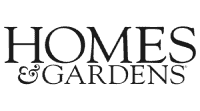
Want New Woodworking Project Ideas?
Get our daily newsletter for helpful woodworking tips, project ideas, helpful videos, and so much more. If you’re not already part of the community, join below – it’s free!
What’s New
Featured In:





Get our daily newsletter for helpful woodworking tips, project ideas, helpful videos, and so much more. If you’re not already part of the community, join below – it’s free!
Featured In:



